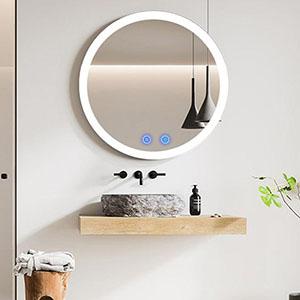The Growing Demand for Energy-Efficient Aluminum Windows and Doors: Trends, Innovations, and Market Outlook
In the ever-evolving construction industry, energy-efficient aluminum windows and doors have emerged as a cornerstone of modern building design. These sophisticated components not only enhance aesthetic appeal but also offer substantial environmental and economic benefits, making them increasingly popular among architects, builders, and homeowners alike.
Understanding Energy Efficiency in aluminum windows and Doors
Energy-efficient aluminum windows and doors are designed to minimize heat transfer, reduce energy consumption, and maintain comfortable indoor environments. This is achieved through advanced engineering techniques such as thermal breaks, which are insulating materials integrated into the aluminum frame to prevent thermal conductivity. Combined with high-quality laminated or tempered glass, these systems significantly improve a building's thermal performance.
The manufacturing process involves precision craftsmanship to ensure tight seals and optimal performance. Modern production technologies allow for greater consistency and quality control, resulting in products that meet or exceed industry standards for energy efficiency and durability.
Market Drivers and Consumer Preferences
Several factors are fueling the growing demand for Energy-efficient aluminum windows and doors. Rising energy costs and environmental awareness have prompted consumers and businesses to seek solutions that reduce their carbon footprint while lowering operational expenses. Additionally, stricter building codes and regulations are mandating higher energy performance standards, making energy-efficient options not just desirable but often necessary.
Architects and designers are increasingly specifying these products for new constructions and renovations due to their versatility in design and ability to complement various architectural styles. The availability of customizable options allows for personalization in color, finish, and functionality, meeting diverse aesthetic preferences while maintaining performance standards.
Technological Advancements and Innovations
The aluminum window and door industry is witnessing significant technological advancements that enhance product offerings. Smart integration is becoming increasingly common, with features such as automated shading, temperature sensors, and connectivity to building management systems or smart home platforms. This allows for optimized energy usage and enhanced user convenience.
Material science innovations have led to improved aluminum alloys that offer greater strength-to-weight ratios and corrosion resistance. This results in longer product lifespans and reduced maintenance requirements. Additionally, advancements in glass technology, such as low-emissivity coatings and gas fills, further enhance thermal performance when integrated with aluminum frames.
Environmental and Economic Benefits
Energy-efficient aluminum windows and doors contribute substantially to environmental sustainability. By reducing the energy required for heating and cooling, they lower a building's overall energy consumption and associated greenhouse gas emissions. The durable nature of aluminum ensures these products remain functional and effective for extended periods, reducing waste from replacements.
From an economic perspective, the initial investment in high-quality energy-efficient aluminum windows and doors is offset by long-term savings on energy bills. Studies have shown that buildings equipped with such systems can achieve significant reductions in energy costs, making them a financially prudent choice for both residential and commercial properties.
Future Trends and Market Expansion
Looking ahead, the market for energy-efficient aluminum windows and doors is poised for continued growth and expansion. Emerging markets in regions such as Asia-Pacific and the Middle East present substantial opportunities due to rapid urbanization and increasing focus on sustainable development.
Technological integration will continue to advance, with virtual reality (VR) and augmented reality (AR) tools allowing customers to visualize and customize their window and door systems digitally before installation. This enhances the buying experience and ensures alignment between customer expectations and final product delivery.
Conclusion
Energy-efficient aluminum windows and doors represent a forward-thinking approach to construction that addresses contemporary challenges while offering aesthetic and functional benefits. As technology evolves and market acceptance grows, these innovative systems are likely to become an increasingly common feature in both urban and rural landscapes, reshaping the future of global construction practices.
 English
English Russian
Russian



